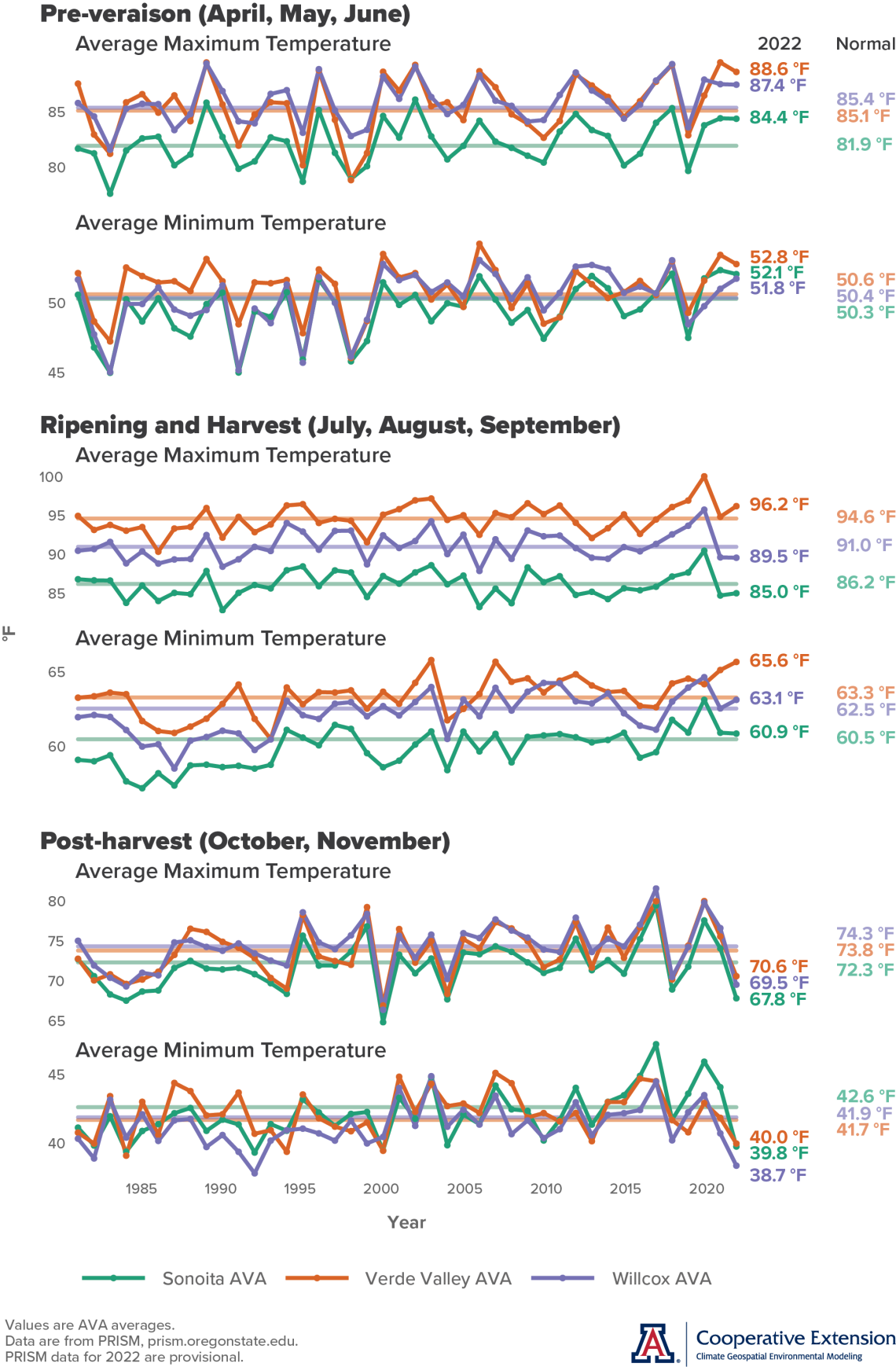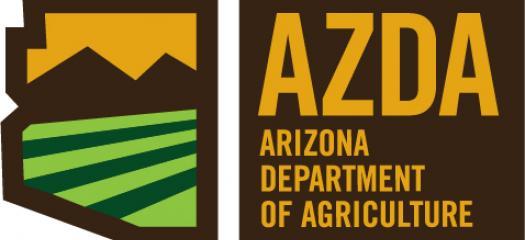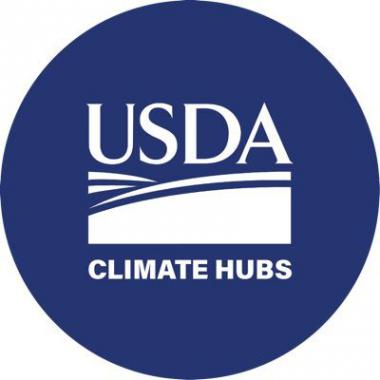Climate Viticulture Newsletter - 2022 December
< Back to Climate Viticulture Newsletter
Hello, everyone!
This is the December 2022 issue of the Climate Viticulture Newsletter – a quick look at some timely climate topics relevant to wine grape growing in Arizona.
November Recap | December Outlook | Growing Season Review | Extra Notes
A Recap of November Temperature and Precipitation
Monthly average temperatures were at least 3 to 5 °F below the 1991-2020 normal for almost the entire state (blue and purple areas on map), including the three Arizona AVAs. For reference, monthly temperatures in November last year were 2 to 6 °F above normal for almost all of the state.
Area-average maximum and minimum temperatures during November 2022 were 62.9 and 33.4 °F for the Sonoita AVA, 62.2 and 32.1 °F for the Verde Valley AVA, and 64.6 and 31.3 °F for the Willcox AVA. Respective November normals are 67.4 and 37.9 °F, 67.5 and 36.4 °F, and 68.6 and 36.7 °F.
cvn-recap-202212-tmeanDepartureNormal.png

Monthly precipitation totals were less than 50 % of normal for much of southern and north-central Arizona (yellow and dark yellow areas on map), including all three Arizona AVAs. Many areas in the northern half of the state measured between 50 and 150 % of normal (light yellow, white, and light aqua areas on map). Precipitation during November 2021 was less than 25 % of normal for almost the entire state.
Area-average total precipitation in November 2022 was 0.27 inches for the Sonoita AVA, 0.31 inches for the Verde Valley AVA, and 0.06 inches for the Willcox AVA. Respective November normals are 0.82, 0.86, and 0.76 inches.
The relatively dry start to the dormancy season, plus a rare La Niña three-peat (details below), once again put attention on the need for winter irrigation to help manage issues like delayed spring growth.
Dig into daily weather summaries from 2022 for the AZMet Bonita and Willcox Bench stations in the Willcox AVA
Learn more about PRISM climate data
cvn-recap-202212-pptPercentNormal.png

The Outlook for December Temperature and Precipitation
Temperatures over the course of this month have a slight increase in chances for being above the 1991-2020 normal across extreme east-central and southeastern Arizona (light orange area on map). Otherwise, there are equal chances for below-, near-, or above-normal temperatures for the state (white area on map). Monthly temperatures in December last year were 2 to 6 °F above normal for almost all of the state.
Area-average maximum and minimum temperatures during December 2021 were 61.7 and 36.0 °F for the Sonoita AVA, 59.2 and 33.2 °F for the Verde Valley AVA, and 64.5 and 33.3 °F for the Willcox AVA. Respective December normals are 58.5 and 31.6 °F, 57.1 and 30.0 °F, and 59.1 and 30.4 °F.
cvn-outlook-202212-temp.png

Precipitation totals for this month have equal chances for being below-, near-, or above-normal for the entire state (white area on map). Precipitation during December 2021 ranged from near to more than 200 % of normal for much of the western two-thirds of the state, and from 25 to 75 % for several areas in the eastern third.
Area-average precipitation totals in December 2021 were 0.82 inches for the Sonoita AVA, 2.16 inches for the Verde Valley AVA, and 0.82 inches for the Willcox AVA. Respective December normals are 1.40, 1.44, and 1.09 inches.
Read more about the December 2022 temperature and precipitation outlook
To stay informed of long-range temperature and precipitation possibilities beyond the coverage of a standard weather forecast, check in, too, with the six-to-ten-day outlook and eight-to-fourteen-day outlook issued daily by NOAA’s Climate Prediction Center.
cvn-outlook-202212-prcp.png

A Review of the 2022 Growing Season
As the first part of our review of this past growing season, we focus on maximum and minimum temperatures in the three Arizona AVAs. We organize the information by different periods. For simplicity, pre-veraison is during the months of April, May, and June (top two graphs), ripening and harvest is during the months of July, August, and September (middle two graphs), and post-harvest is during the months of October and November (bottom two graphs).
Pre-veraison temperatures were above the 1991-2020 normal (semi-transparent horizontal lines on graphs) for all three AVAs. Maximum temperatures averaged over this period were about 2 to 3 °F warmer, whereas minimum temperatures were 1 to 2 °F warmer. One of the effects of year-to-year variations in temperature during April, May, and June is on heat accumulation and the timing of growth stages between bud break and veraison. Generally, warmer conditions shorten the time it takes for vines to go from the start of the growing season to the point when grapes start to ripen. As you can imagine, this has implications for when grapes ripen and the conditions under which they do so.
Maximum and minimum temperatures during the ripening and harvest period also were about 2 °F above normal, but only for the Verde Valley AVA (orange lines on graphs). For the Sonoita and Willcox AVAs (green and purple lines on graphs, respectively), maximum temperatures were roughly 1 to 2 °F below normal, whereas minimum temperatures were near normal. There’s little doubt that the active monsoon this year had some say on these values, particularly for the latter two AVAs. There’s also little doubt that this part of the growing season is when climatic differences between the three Arizona AVAs really show. Such differences might be a reason to suspect differences in fruit composition between the AVAs, to the extent that exposure to temperatures below 65 °F and above 95 °F affect aspects like balance between sugar levels and acidity as well as degradation of anthocyanins.
Based on the November recap above and recalling what October was like, it is no surprise that maximum and minimum temperatures during the post-harvest period were below normal for all three AVAs. Maximum temperatures averaged over this period were about 3 to 5 °F cooler, whereas minimum temperatures were 2 to 3 °F cooler. Of course, year-to-year variations in post-harvest temperatures – in combination with first fall freeze dates – influence carbon assimilation and storage that is important for the following growing season.
We’ll have a similar seasonal review of precipitation in the issue next month.
cvn-gsr-202212-year-correction.png

There is a 76 % chance that a rare La Niña three-peat will persist through the December-through-February period, and a 57 % chance that ENSO-neutral conditions finally appear during the February-April period. This is the most recent official forecast for ENSO, or El Niño Southern Oscillation, parts of the atmosphere and ocean across the tropical Pacific Ocean that cause El Niño and La Niña events.
Attention all growers, viticulturists, and vineyard owners! University of Arizona Cooperative Extension is conducting a Statewide Viticulture Needs Assessment and needs your help. Topics will include production, irrigation management, soil fertility, and management of pests, pathogens, and disease, among others. Your anonymous feedback is essential and will inform Cooperative Extension as to how it can best serve the wine grape industry. Please click here to access the survey, and contact Matt Halldorson, Yavapai County Director and Associate Agent in Agriculture and Natural Resources with Cooperative Extension, with any questions.
In case you missed it, the Arizona Illustrated show at Arizona Public Media, a non-profit service of the University of Arizona, recently ran a short story on southern Arizona wine grape growing and wine making.
For those of you in southeastern Arizona, including the Sonoita and Willcox AVAs, Cooperative Extension manages an email listserv in coordination with the Tucson forecast office of the National Weather Service to provide information in the days leading up to agriculturally important events, like cold-air outbreaks and the occasional winter storm. Please contact us if you'd like to sign up.
And for those of you in north-central and northeastern Arizona, including the Verde Valley AVA, Cooperative Extension also now manages an email listserv in coordination with the Flagstaff forecast office of the National Weather Service to provide similar information for this part of the state. Please contact us if you'd like to sign up.
Undergraduate students in the College of Agriculture and Life Sciences at the University of Arizona are looking for internships with businesses and companies in the viticulture and winery industries. Please contact Danielle Buhrow, Senior Academic Advisor and Graduate Program Coordinator in the Department of Agricultural and Resource Economics, for more information.
Please feel free to give us feedback on this issue of the Climate Viticulture Newsletter, suggestions on what to include more or less often, and ideas for new topics.
Did someone forward you this newsletter? Please contact us to subscribe.
Have a wonderful December!
With current and past support from:






